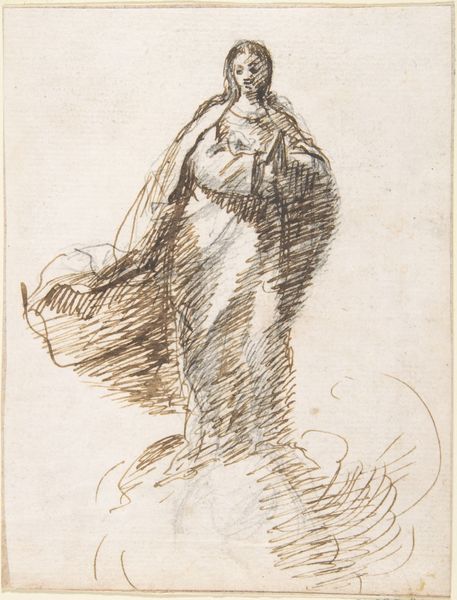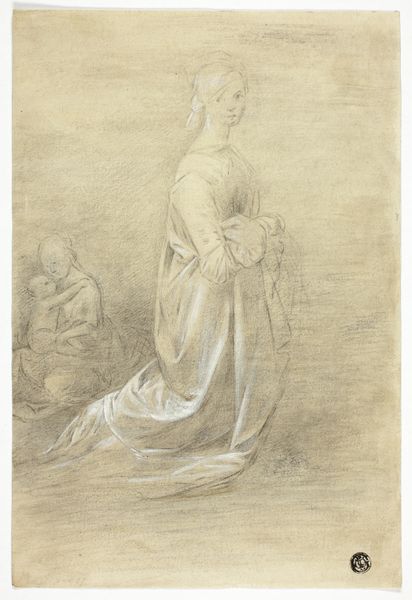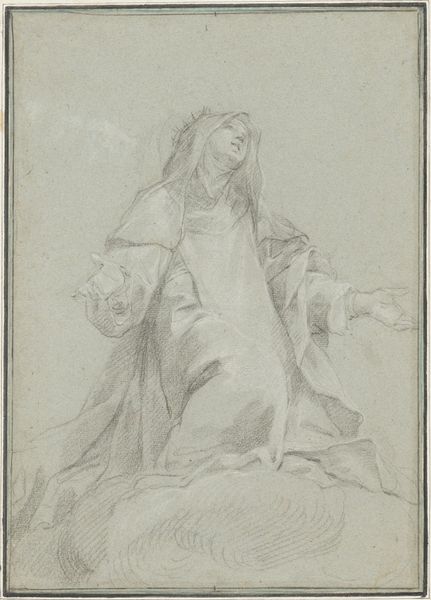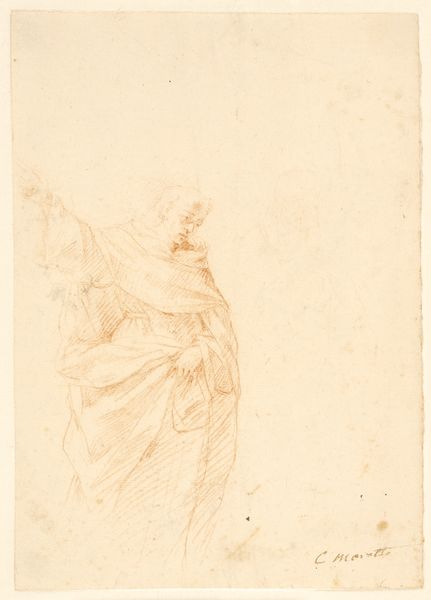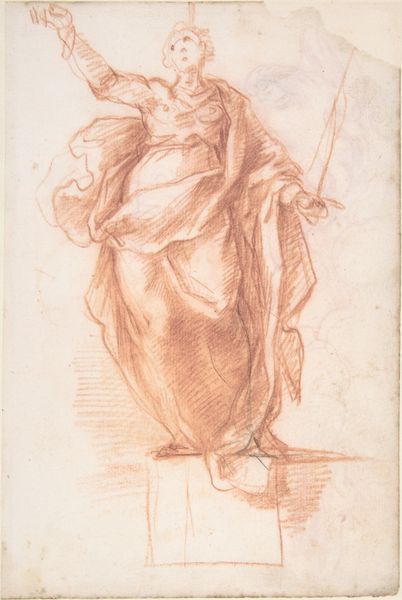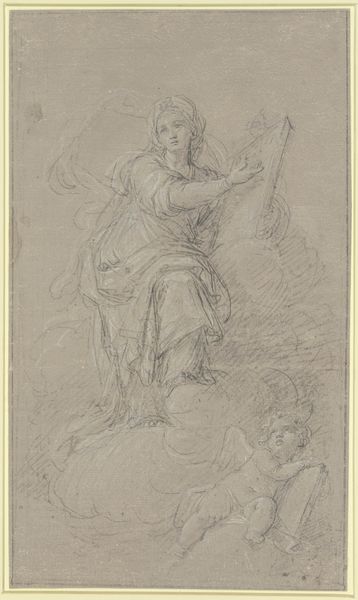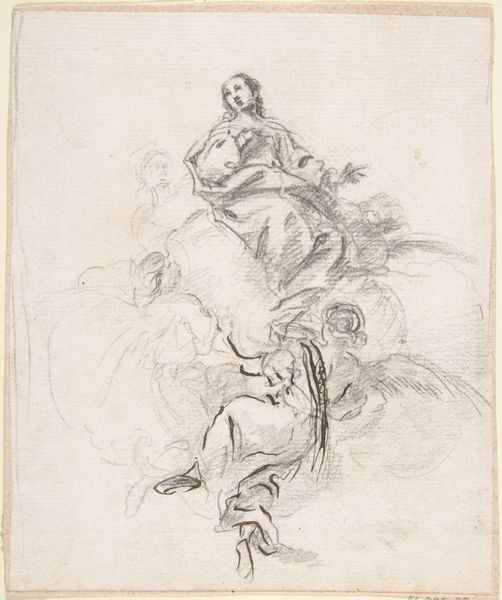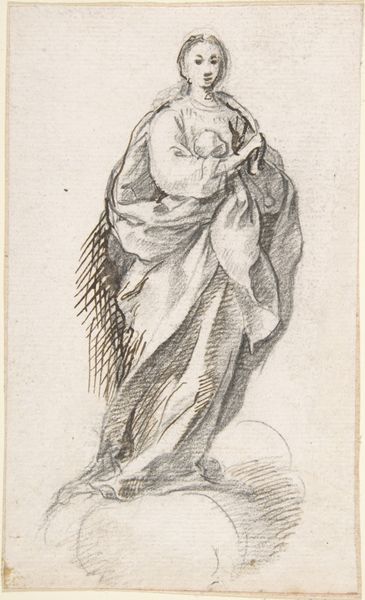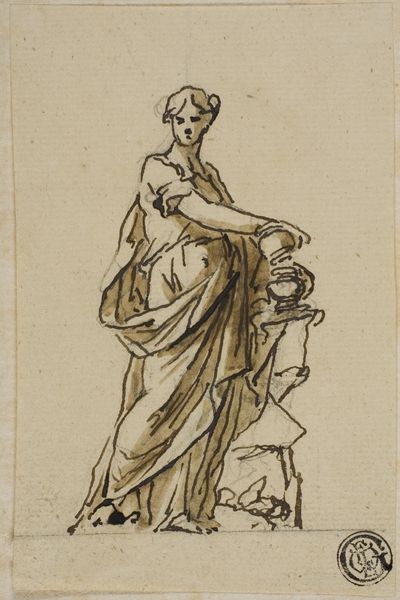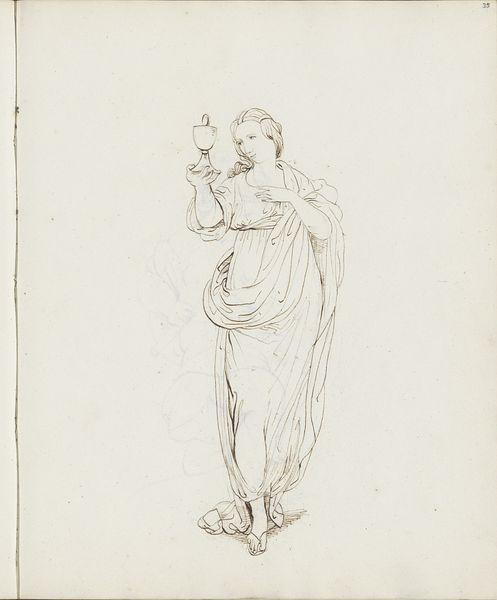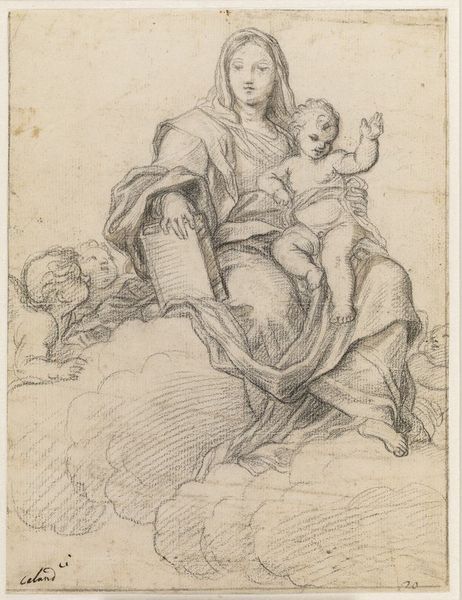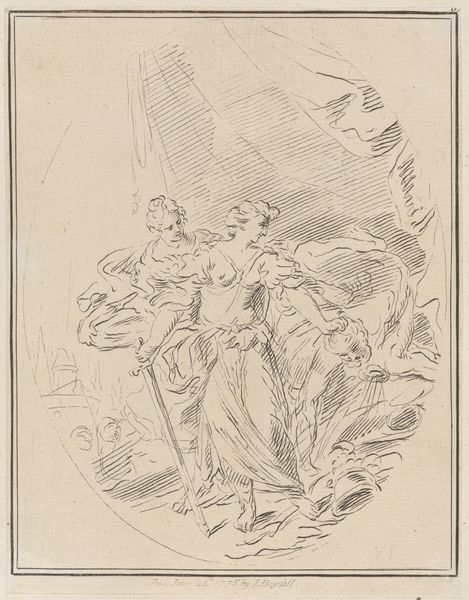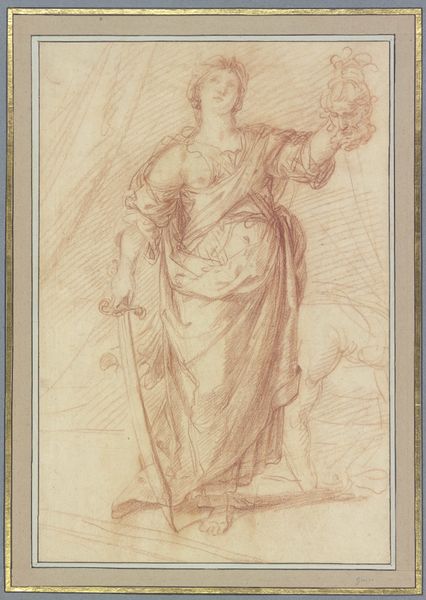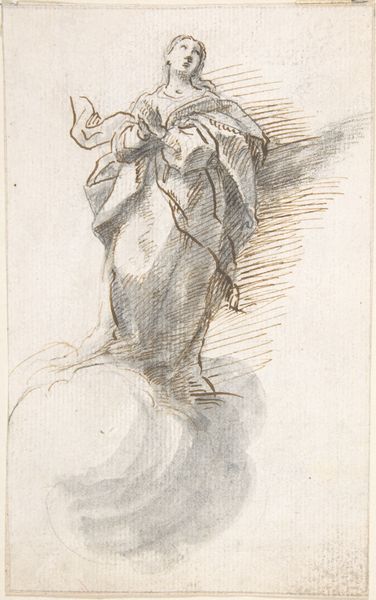
Virgin of the Immaculate Conception Standing on Clouds 1695 - 1705
0:00
0:00
drawing, print
#
pencil drawn
#
drawing
#
amateur sketch
#
toned paper
#
light pencil work
# print
#
pencil sketch
#
incomplete sketchy
#
pencil drawing
#
pen-ink sketch
#
pencil work
#
virgin-mary
#
watercolor
Dimensions: 8-1/8 x 5-9/16 in. (20.6 x 14.2 cm)
Copyright: Public Domain
Curator: Looking at this work by Pedro Duque Cornejo, executed sometime between 1695 and 1705, titled *Virgin of the Immaculate Conception Standing on Clouds*, my immediate impression is how ethereal it feels. Editor: Ethereal, yes, but it's also remarkably grounded in its process. Look at the light pencil work, the toned paper—the means of production are so evident. It feels like we’re catching a glimpse of the artist’s labor, the making of the sacred, through humble materials. Curator: I think that adds to its power. Cornejo was working within a specific visual language, disseminating Counter-Reformation ideology through readily accessible imagery. The Immaculate Conception was a key theme, and prints like these served to reinforce its doctrines across different social strata. Editor: Absolutely, and consider the circulation of these prints. They would have moved through workshops, religious institutions, perhaps even individual homes. It invites questions about who was consuming these images and what kind of devotion the artist hoped to inspire with this level of detailed craftsmanship. It prompts me to ask what the working environment for a sketch such as this was and its place of use and creation. Curator: Right, the ‘public role’ of this artwork, so to speak. And that raises broader questions about artistic patronage at the time and the power dynamics involved in producing and distributing religious art. Religious imagery shaped viewers and how patrons could benefit and direct this force by the mass reproduction of it for an easier spread and devotion throughout. Editor: Indeed. We’re seeing the complex intersection of faith, artistry, and market forces shaping the materiality of the piece. The materiality dictates what classes get to use this and how easy it would be to possess this piece of religious material, and shapes where religious devotion can be expressed. Curator: Precisely, it challenges the traditional boundary between high art and popular devotion. Thinking about the institution and political and devotional motivations helps. I wonder, who did this ultimately reach? What workshops were capable of producing prints such as these, and what does it ultimately tell us about the context that religious art occupies? Editor: A fascinating reminder that even the most spiritual images are born from a confluence of tangible processes and societal influence. The artist can hope to create this devotional work for higher divine ends, but this work and devotion still will meet the hands of mortal and secular man in which that piece is made and used. Curator: Absolutely, thank you, this has changed my view on this artwork a lot, its initial appeal is so deceiving in hiding all that can be understood through materiality and history.
Comments
No comments
Be the first to comment and join the conversation on the ultimate creative platform.
